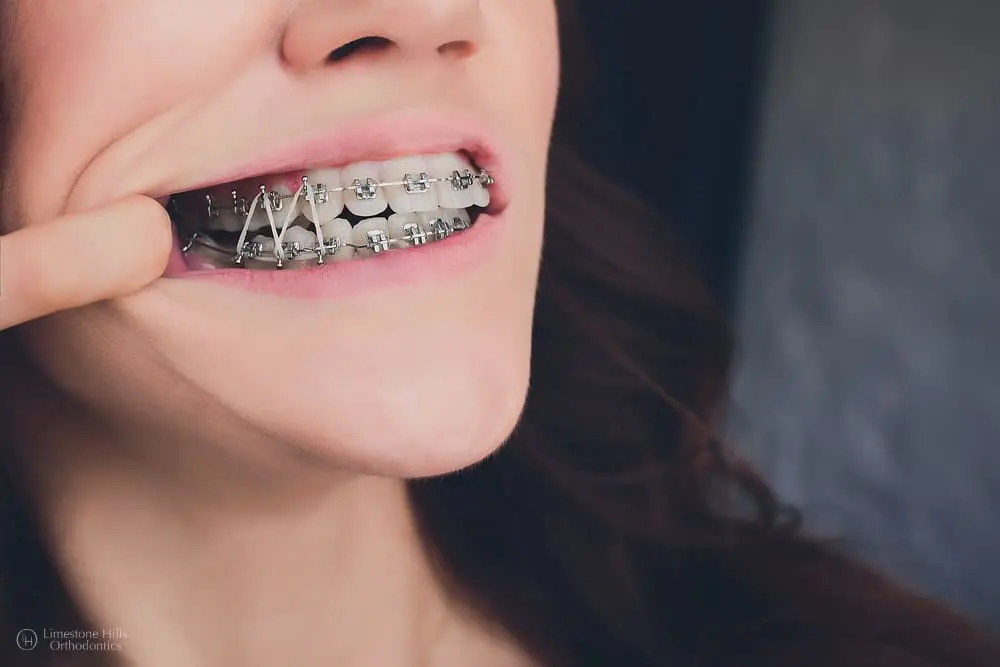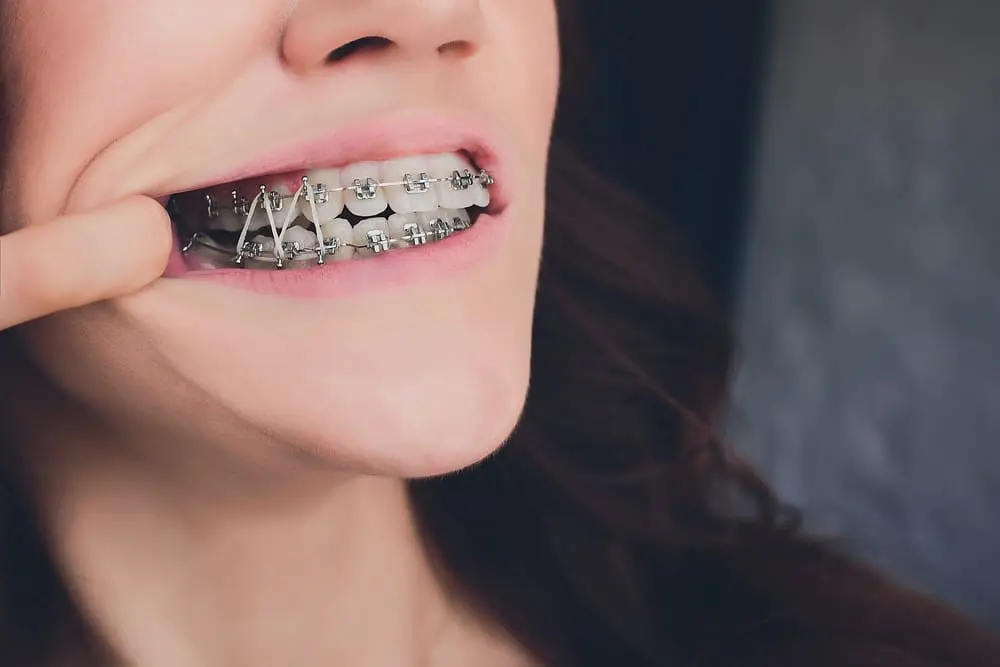Orthodontic elastic bands, also called rubber bands, are tiny but powerful tools in orthodontic treatment. They play an essential role in moving teeth and aligning the jaws. If you’re wearing braces or considering braces, you’ve likely heard about orthodontic rubber bands. But how exactly do they work, and why are they important?
This guide explains the types of orthodontic elastic bands, how they are used, and what you need to know to ensure your treatment is successful.

Why Are Orthodontic Rubber Bands Important?
Orthodontic elastic bands help apply pressure to move teeth and adjust the jaw’s position. Braces alone might not be enough to correct bite issues or close gaps between teeth. Orthodontic rubber bands provide that extra push to make sure your smile is properly aligned.
These small rubber bands are stretched across different hooks on your braces to guide your teeth into the desired position. With consistent use, elastics can dramatically improve the results of your orthodontic treatment.
Types of Orthodontic Elastic Bands
Did you know there are several types of orthodontic rubber bands? Each one has specific jobs based on what kind of bite or alignment issue you need to fix.
- Class II Rubber Bands: These are used when patients have an overbite. They work by pulling the upper teeth backward and the lower teeth forward to correct the bite.
- Class III Rubber Bands: These are for patients with an underbite. Class III orthodontic rubber bands work in the opposite way of Class II elastics—they move the lower teeth backward and the upper teeth forward.
- Vertical Rubber Bands: These are used to help close gaps between the upper and lower teeth, making the bite fit together correctly. They are often applied to improve overall alignment as well.
Your orthodontist will determine which type of orthodontic rubber bands you need based on your treatment plan.
How Are Orthodontic Rubber Bands Attached?
Attaching elastics is straightforward, but it’s important to do it correctly to ensure that your treatment progresses as planned. Here’s how they generally work:
- Hooks on the Upper Canine Teeth: These are common anchor points for elastics. They allow the rubber bands to pull the upper teeth into the correct position.
- Hooks on the Lower Brackets: These are used to adjust the position of the lower teeth and jaw.
Elastics are placed between these hooks to create the tension needed to move your teeth. Your orthodontist will show you exactly how to attach them during your appointments. Proper attachment is crucial to ensure the bands work as intended.
How to Use Orthodontic Rubber Bands
Wearing elastics may seem challenging at first, but with practice, it becomes part of your routine. To get the best results, follow these tips:
- Wear Them as Directed: Most orthodontists recommend wearing them 20–24 hours a day. Remove them only during meals, brushing, and flossing. Consistency is the key to achieving results as quickly as possible.
- Replace Them Daily: Orthodontic elastics lose their elasticity over time, which can make them less effective. Change them at least once a day or as directed by your orthodontist. Keeping them fresh ensures they provide the proper tension.
- Keep Extras on Hand: Always carry extra bands with you. If one breaks or gets lost, you’ll be able to replace it right away and avoid delays in your treatment.
Caring for Your Orthodontic Rubber Bands and Braces
Maintaining your elastics and braces is essential for keeping your teeth healthy during treatment. Here are some tips to ensure success:
- Brush Your Teeth Regularly: Brushing at least twice a day—and preferably after meals—will help prevent plaque buildup around your brackets and elastics. This keeps your teeth and gums healthy.
- Remove Elastics Before Meals: Orthodontic rubber bands should always be taken out when you eat or drink (except for water). Otherwise, they might snap or lose their elasticity. Removing them during meals also allows for easy cleaning of your teeth and braces.
- Inspect for Wear and Tear: Check your elastics and braces daily to make sure nothing is broken or out of place. If you notice a problem, contact your orthodontist.
Common Challenges with Orthodontic Rubber Bands (and How to Handle Them)
Using orthodontic rubber bands can take some getting used to, and you might experience a few bumps along the way. Here are some common challenges and how to deal with them:
- Elastic Breakage: Rubber bands can break, especially when you first start using them. If this happens, replace the elastic immediately. Missing even a few hours of wear time can slow down your progress.
- Discomfort or Soreness: When you first start wearing orthodontic rubber bands, you might feel some soreness in your teeth or jaw. This is normal because your teeth are moving. Over-the-counter pain relief can help, but if the discomfort persists, let your orthodontist know.
- Difficulty Attaching Them: Attaching your orthodontic rubber bands might feel tricky at first, but with practice, it becomes easier. Use a mirror and follow your orthodontist’s instructions closely. Carrying a small mirror with you can also help when you’re not at home.
How Long Will You Need to Wear Orthodontic Rubber Bands?
The amount of time you’ll need orthodontic rubber bands depends on your specific treatment plan. Some patients wear them for just a few months, while others might need them for most of their treatment. Following your orthodontist’s instructions for how often and how long to wear elastics is critical to finishing your treatment on schedule.

Why Families Trust Our Austin, TX Orthodontic Practice
Your child’s smile deserves expert care, and our Austin orthodontic office is here to provide just that. Here’s what sets us apart:
Expert Orthodontists
We have extensive experience treating jaw alignment issues in children and teens, using effective solutions like reverse pull headgear.
Custom Treatment for Every Patient
We believe in personalized care, tailoring treatment plans to fit each patient’s unique smile.
Compassionate, Ongoing Support
Our team is here to answer questions, adjust treatments, and support your child through every step of their orthodontic journey.
Advanced Treatment Choices
From Invisalign to braces and reverse pull headgear, we offer multiple options to ensure the best results for each patient.
Contact Us Today!
Come see us in Austin, TX, for a free consultation! During your visit, we’ll assess your teeth, go over your treatment options, and discuss how we can help you achieve a straight, confident smile. Scheduling is simple—give us a call or visit our website to book a time that works for you! Our friendly team is ready to answer your questions and guide you every step of the way.
About the Authors
Dr. Rodrigo Viecilli – Orthodontist in Austin, TX
Frequently Asked Questions
What is the rule of 3 orthodontic rubber bands?
The rule of 3 rubber bands is a delightful little trick to keep your hair game strong and steady! Imagine you’re out and about, and suddenly, your trusty hair tie snaps—oh no! That’s where the rule of 3 rubber bands comes in handy. It’s all about having three hair ties on your wrist or in your bag at all times. This way, you’re always prepared for any hair emergency, whether it’s a sudden gust of wind or an impromptu workout session.
How long should you wear rubber bands in braces?
When it comes to wearing rubber bands with your braces, it’s all about following your orthodontist’s advice, as they know what’s best for your unique smile. Generally, you’ll need to wear them most of the day, even while sleeping, but you can take them out when eating or brushing your teeth. The duration can vary from a few weeks to several months, depending on your treatment plan.
What happens if I don t wear my rubber bands for a few days?
If you skip wearing your rubber bands for a few days, it might slow down the progress of your orthodontic treatment. Your teeth need consistent pressure to move into the right position, and taking a break can cause them to shift back a bit. But don’t worry too much! Just try to get back on track as soon as you can, and remember that every day counts towards that perfect smile. Keep up the great work!


